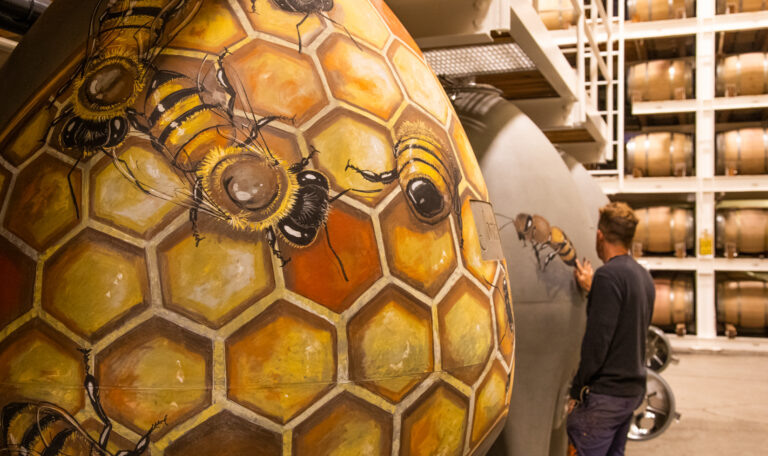
Menu
A sustainable farm like Jordan Estate is home not only to grapevines and olive trees, but also animals and insects that contribute to the ecosystem, such as cows, chickens and, most importantly, bees. How we take care of our bees is a critical step since both native bees and honeybees help pollinate our chef’s garden and wildflowers across our open spaces, contributing to the biodiversity of the land. Jordan Estate Honey is a staple in the winery kitchen, finding its way into Tours & Tastings menus and other recipes.